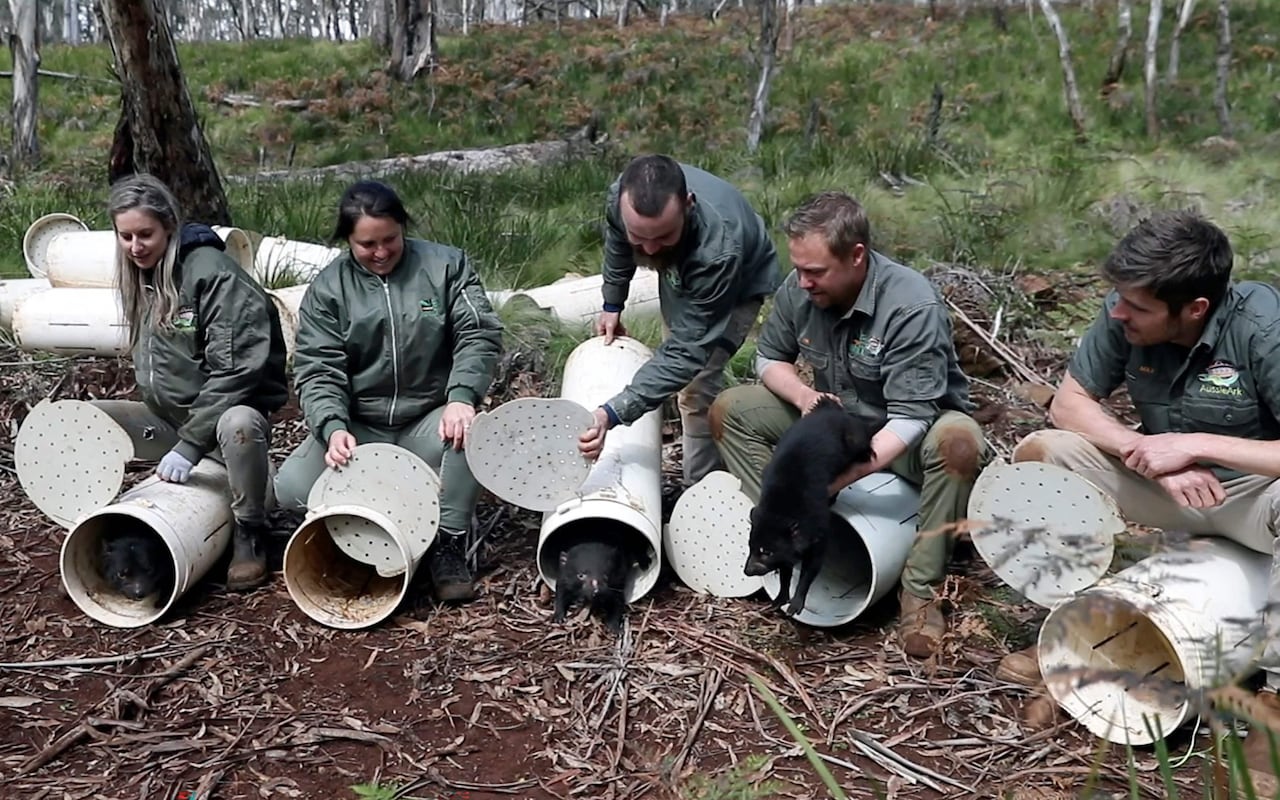
3,000 years later, Tasmanian devils are back in the wild on Australia’s mainland after going extinct there.
Tasmanian Devils have continued to live on the island of Tasmania right up to the modern day.
“The Tasmanian devil (Sarcophilus harrisii) is a carnivorous marsupial of the family Dasyuridae. It was once native to mainland Australia and was only found in the wild on the island state of Tasmania. It has now been reintroduced to New South Wales with a small breeding population.[3] The size of a small dog, the Tasmanian devil became the largest carnivorous marsupial in the world following the extinction of the thylacine in 1936. ”
– Wikipedia
Conservationists are describing the reintroduction of Tasmanian devils to Australia’s mainland as a “historic” step, according to the Telegraph.
Aussie Ark, along with a coalition of other conservation groups, said on Monday that they had released 26 of the carnivorous mammals into a 400-hectare (1,000-acre) sanctuary at Barrington Tops, about 3.5 hours north of Sydney, Australia.
Tasmanian Devils released into wild in mainland Australia 3,000 years after they went extinct there https://t.co/1o968hwjr8
— BBC News (World) (@BBCWorld) October 5, 2020
President of Aussie Ark Tim Faulkner said the “historic” releases in July and September were the first steps in a project akin to the successful move to return wolves to Yellowstone National Park in the United States in the 1990s, the Telegraph reports.
After 16 years of work, including the establishment of mainland Australia’s largest Tasmanian devil breeding program, Faulkner told AFP it was “incredible and surreal” to have reached the goal.
“It’s the stuff dreams are made of,” Faulkner told AFP.

Sooo, if these little critters were extinct 3000 yrs ago, how are they here today? Doesn’t extinct mean gone? No more? Vanished?
I’m no biologist, but they were just made extinct locally on the Australian mainland (as stated in the article) but have survived on the island of Tasmania. Maybe the author could have mentioned this, or used the term “Extirpated” instead, which means locally extinct.